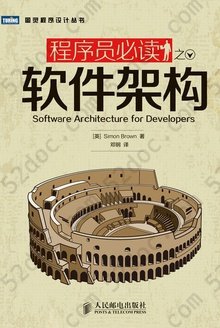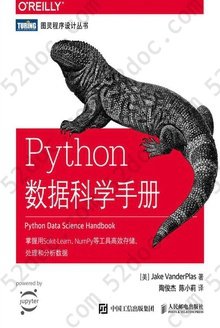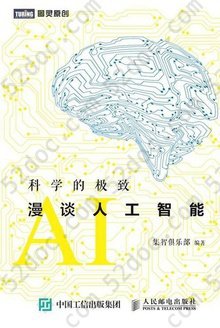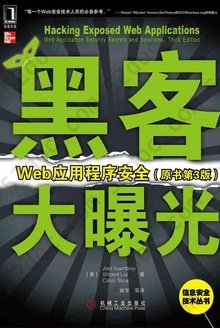注重体验与质量的电子书资源下载网站
分类于: 计算机基础 设计
简介
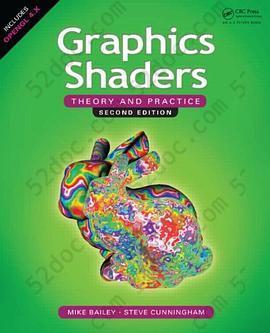
Graphics Shaders: Theory and Practice 豆 0.0分
资源最后更新于 2020-08-23 16:17:58
作者:Mike Bailey
出版社:无A K Peters/CRC Press
出版日期:2011-01
ISBN:9781568814346
文件格式: pdf
标签: Graphics 图形学 shader GLSL 计算机科学 Shaders OpenGL 计算机图形学
简介· · · · · ·
Graphics Shaders: Theory and Practice is intended for a second course in computer graphics at the undergraduate or graduate level, introducing shader programming in general, but focusing on the GLSL shading language. While teaching how to write programmable shaders, the authors also teach and reinforce the fundamentals of computer graphics. The second edition has been updated t...
目录
The Fixed-Function Graphics Pipeline
The Traditional View
How the Traditional View Is Implemented
Vertex Arrays
Conclusions
OpenGL Shader Evolution
History of Shaders
OpenGL Shader History
OpenGL ES
How Can You Respond to These Changes?
Our Approach in This Book
Fundamental Shader Concepts
Shaders in the Graphics Pipeline
The GLSL Shading Language
Passing Data from Your Application into Shaders
Using glman
Using glman
GLIB Scene Creation
More on Textures and Noise
Functions in the glman Interface Window
The GLSL Shader Language
Factors that Shape Shader Languages
General GLSL Language Concepts
Language Details
Compatibility Mode
Summary
Lighting
The ADS Lighting Model
Types of Lights
Setting Up Lighting for Shading
Vertex Shaders
Vertex Shaders in the Graphics Pipeline
Replacing Fixed-Function Graphics with Vertex Shaders
Going beyond the Fixed-Function Pipeline with Vertex Shaders
Vertex Modification
Issues in Vertex Shaders
Summary
Fragment Shaders and Surface Appearance
Basic Function of a Fragment Shader
Fragment Shader Processing
Replacing Fixed-Function Processing with Fragment Shaders
What Follows a Fragment Shader?
Additional Shader Effects
Surface Textures in the Fragment Shader
Texture Coordinates
Traditional Texture Mapping
GLSL Texture Mapping
Render to Texture
Render to Texture for Multipass Rendering in glman
Noise
Fundamental Noise Concepts
Other Noise Concepts
Some Examples of Noise in Different Environments
Advanced Noise Topics
Using Noisegraph
Image Manipulation with Shaders
Basic Concepts
Single-Image Manipulation
The Image Blending Process
Blending an Image with a Constant Base Image
Blending an Image with a Version of Itself
Blending Two Different Images
Notes
Geometry Shader Concepts and Examples
What Does the Geometry Shader Do?
Normals in Geometry Shaders
Examples
Tessellation Shaders
What Are Tessellation Shaders?
Tessellation Shader Concepts
Examples
Summary
The GLSL API
Shaders in the OpenGL Programming Process
How Is a GLSL Shader Program Created?
Creating and Compiling Shader Objects
Creating, Attaching, Linking, and Activating Shader Programs
Passing Data into Shaders
Using Shaders for Scientific Visualization
Image-Based Visualization Techniques
Hyperbolic Geometry
3D Scalar Data Visualization
More on Transfer Functions
Passing in Data Values with Your Geometry
Terrain Bump-Mapping
Flow Visualization
Geometry Visualization
Serious Fun
Light Interference
Lens Effects
Bathroom Glass
Atmospheric Effects
Fun with One
Using the glman Timer Function
Disco Ball
Fog, with and without Noise
Morphing 3D Geometry
Algorithmic Art
Making Information Visible through Motion
An Explosion Shader
Appendices
References
Index
The Traditional View
How the Traditional View Is Implemented
Vertex Arrays
Conclusions
OpenGL Shader Evolution
History of Shaders
OpenGL Shader History
OpenGL ES
How Can You Respond to These Changes?
Our Approach in This Book
Fundamental Shader Concepts
Shaders in the Graphics Pipeline
The GLSL Shading Language
Passing Data from Your Application into Shaders
Using glman
Using glman
GLIB Scene Creation
More on Textures and Noise
Functions in the glman Interface Window
The GLSL Shader Language
Factors that Shape Shader Languages
General GLSL Language Concepts
Language Details
Compatibility Mode
Summary
Lighting
The ADS Lighting Model
Types of Lights
Setting Up Lighting for Shading
Vertex Shaders
Vertex Shaders in the Graphics Pipeline
Replacing Fixed-Function Graphics with Vertex Shaders
Going beyond the Fixed-Function Pipeline with Vertex Shaders
Vertex Modification
Issues in Vertex Shaders
Summary
Fragment Shaders and Surface Appearance
Basic Function of a Fragment Shader
Fragment Shader Processing
Replacing Fixed-Function Processing with Fragment Shaders
What Follows a Fragment Shader?
Additional Shader Effects
Surface Textures in the Fragment Shader
Texture Coordinates
Traditional Texture Mapping
GLSL Texture Mapping
Render to Texture
Render to Texture for Multipass Rendering in glman
Noise
Fundamental Noise Concepts
Other Noise Concepts
Some Examples of Noise in Different Environments
Advanced Noise Topics
Using Noisegraph
Image Manipulation with Shaders
Basic Concepts
Single-Image Manipulation
The Image Blending Process
Blending an Image with a Constant Base Image
Blending an Image with a Version of Itself
Blending Two Different Images
Notes
Geometry Shader Concepts and Examples
What Does the Geometry Shader Do?
Normals in Geometry Shaders
Examples
Tessellation Shaders
What Are Tessellation Shaders?
Tessellation Shader Concepts
Examples
Summary
The GLSL API
Shaders in the OpenGL Programming Process
How Is a GLSL Shader Program Created?
Creating and Compiling Shader Objects
Creating, Attaching, Linking, and Activating Shader Programs
Passing Data into Shaders
Using Shaders for Scientific Visualization
Image-Based Visualization Techniques
Hyperbolic Geometry
3D Scalar Data Visualization
More on Transfer Functions
Passing in Data Values with Your Geometry
Terrain Bump-Mapping
Flow Visualization
Geometry Visualization
Serious Fun
Light Interference
Lens Effects
Bathroom Glass
Atmospheric Effects
Fun with One
Using the glman Timer Function
Disco Ball
Fog, with and without Noise
Morphing 3D Geometry
Algorithmic Art
Making Information Visible through Motion
An Explosion Shader
Appendices
References
Index



